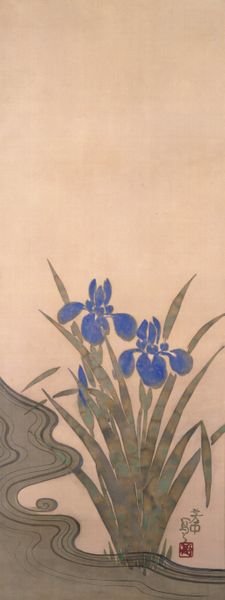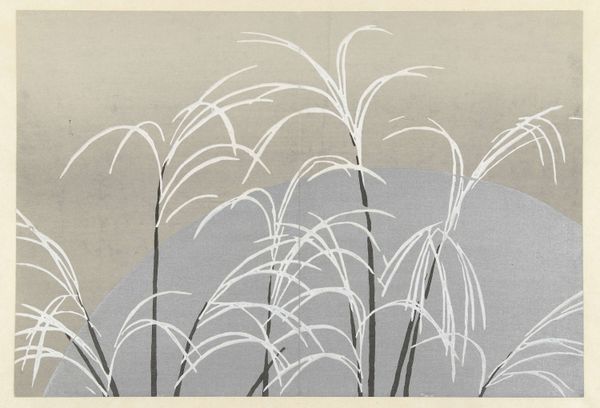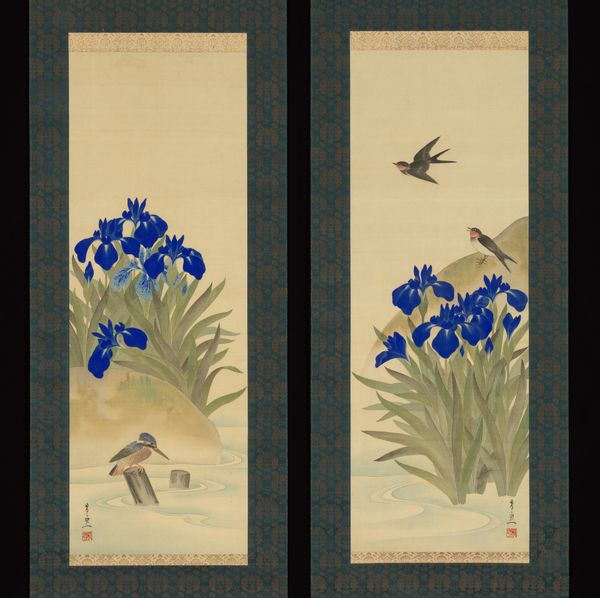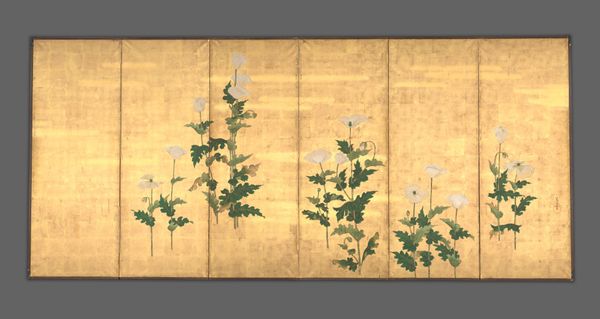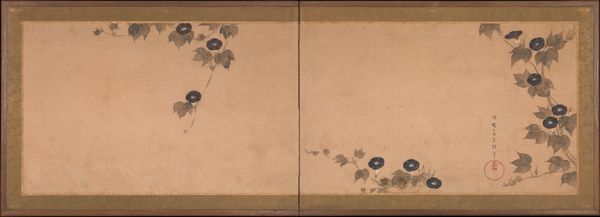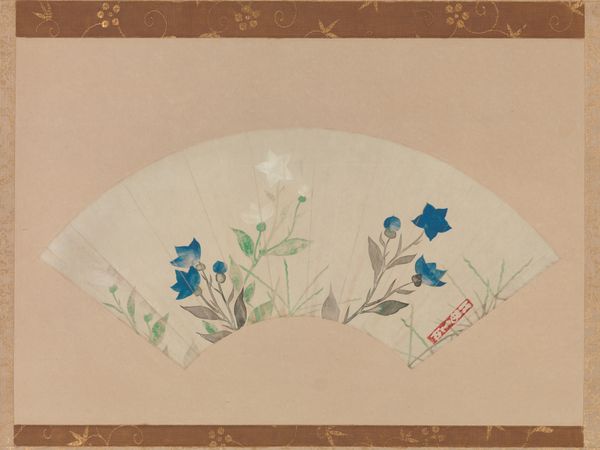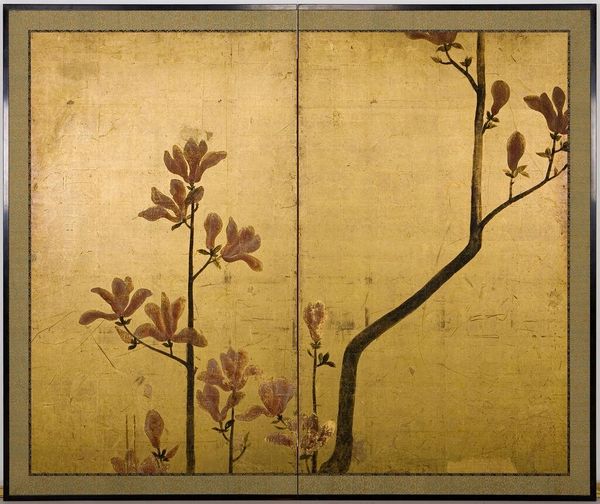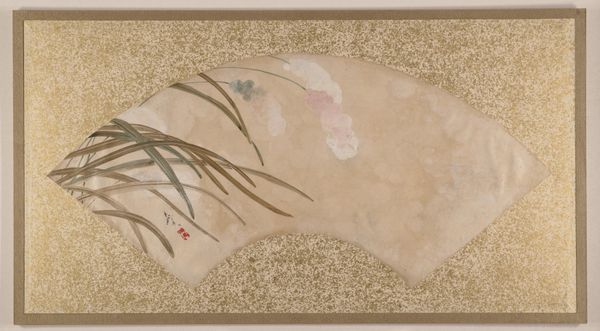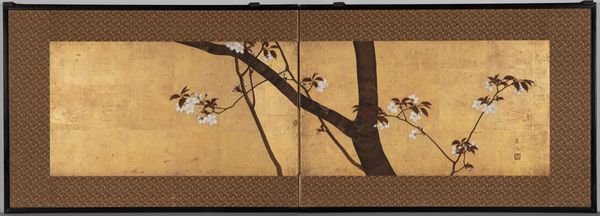![Irises [left of a pair] by Sakai Hōitsu](/_next/image?url=https%3A%2F%2Fd2w8kbdekdi1gv.cloudfront.net%2FeyJidWNrZXQiOiAiYXJ0ZXJhLWltYWdlcy1idWNrZXQiLCAia2V5IjogImFydHdvcmtzLzUwZjZkNDlhLTE4NzgtNGI3MC05ZTc5LWNlMzVmMWJhZGQ1ZC81MGY2ZDQ5YS0xODc4LTRiNzAtOWU3OS1jZTM1ZjFiYWRkNWRfZnVsbC5qcGciLCAiZWRpdHMiOiB7InJlc2l6ZSI6IHsid2lkdGgiOiAxOTIwLCAiaGVpZ2h0IjogMTkyMCwgImZpdCI6ICJpbnNpZGUifX19&w=3840&q=75)
Dimensions: 47 3/4 × 95 7/8 in. (121.29 × 243.52 cm) (image)48 7/8 × 97 3/8 × 1/2 in. (124.14 × 247.33 × 1.27 cm) (mount)
Copyright: Public Domain
This is one half of a pair of folding screens painted with ink and color on gold leafed paper by Sakai Hōitsu in Japan, sometime in the late 18th or early 19th century. Hoitsu was the leading artist of the Rinpa school, which saw artists taking inspiration from classical models but updating them for a contemporary audience. In this case, the iris motif is taken from a celebrated pair of screens by Ogata Kōrin, which was itself inspired by an episode from the Tales of Ise, a Heian period story in which a poet stops to admire some irises. However, Hoitsu departs from the traditional imagery in his restrained color palette and strikingly modern composition. Screens such as this one would have been commissioned by wealthy merchants who had been excluded from the aristocracy but wanted to demonstrate their refinement and knowledge of Japanese cultural traditions. By studying such objects, and texts such as the Tales of Ise, we can appreciate the complex social dynamics of Tokugawa-era Japan.
Comments
No comments
Be the first to comment and join the conversation on the ultimate creative platform.


